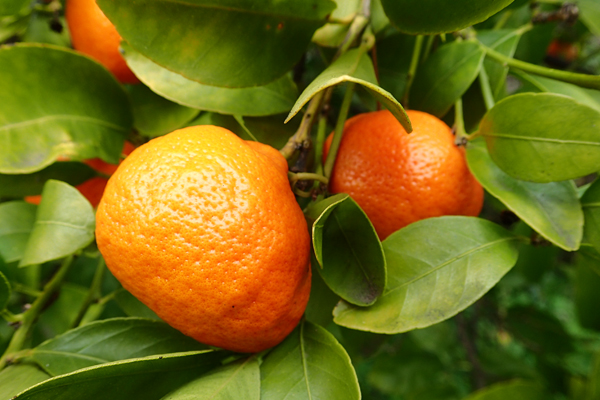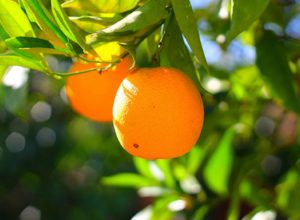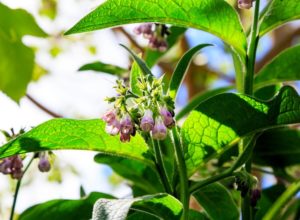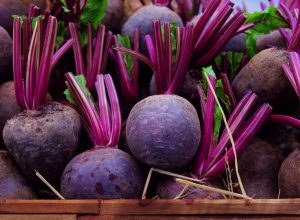June Gardening Guide – Mediterranean Climate
(Image Credit: Paul Goodsell)
Adelaide is cooling down now after what seemed a brief autumn, and the outlook suggests we’re likely to have a wet winter. After that though, we appear to be leading into the El Nino pattern of a hot dry spring and summer. All this means that now is the time for us to get organised to catch water everywhere we can, and hold it to maintain our gardens through the dry. As well as installing rainwater tanks, we can invest in our soil health right, remembering that the more organic matter we add to our soils, the more (vastly more!) moisture they can absorb and hold. That means make compost, look out for sources of mulch, and build swales on sloping ground to assist water absorption. Where soil is clay-based (as in much of Adelaide), work it while it’s moist but not sodden. Aerate it gently, add gypsum if needed to improve drainage, but avoid overturning the soil and destroying its structure.
Veggies and Flowers to Plant in May
Veg: Artichoke suckers, asparagus crowns, broad beans (S), carrots (S); broccoli, Brussels sprout, cabbage, cauliflower, celeriac, celery, kale, leeks, lettuce, radish, rocket, silverbeet, spinach, swede, turnip, watercress (S = seed). Seed potatoes and garlic cloves. Strawberry runners.
Flowers: Late winter and spring-flowering bulbs are popping up now so get them in quickly and fertilise to nourish next year’s bulbs.
Seeds to get Going in Preparation for Seedlings this Month
Brassicas (cabbage & relatives), silverbeet/spinach family, lettuces, celery
What to Harvest, Store and Preserve this Month
Imperial mandarins have been bearing heavily – still keeping well. Emperor mandarins are starting to ripen. Eureka lemons are in full swing and Lisbon lemons following. Feijoas dropping fruit – signals ripeness. Sweet persimmons are finishing and astringent varieties still holding on trees while their brilliant orange leaves fall to the ground. Also harvest limes, oranges and other citrus, late pome fruits (apples, pears and quinces), early peas, salad greens…always pick the outer leaves of the greens to let the inner leaves keep on growing!
Native plants such as Acacia and Templetonia have begun flowering – great for floral arrangements, and this pruning encourages strong bushy growth and further flowering. And lillypillies are in abundance for jam.
Garden Jobs for June
Our soil is cooling now, so it’s time to stop planting evergreens and instead prepare soil for winter planting of deciduous bare-rooted fruit trees and perennials such as asparagus, artichokes, rhubarb, berries etc. The cooler temperatures mean that deciduous plants will become fully dormant while evergreens will slow their growth, being less able to take up and use nutrients in the cooler conditions. Adjust fertilising regimes accordingly. Hold off on additions of strong manures, blood and bone etc until spring except where planting hungry vegetables. Nurture leafy greens with liquid fertilisers (weed tea, worm wee, seaweed and fish solutions etc) which can be watered over the whole plant for a foliar feed as well as going to the roots – thus ensuring maximum absorption.
Find and use whatever warmth you have – e.g. sit seedling trays on a hot water service or in a warm protected nook to aid germination, use cloches to get seedlings started, place compost bins (regularly aerated for maximum heat generation) in greenhouses or vegetable beds to add to the warmth of the microclimate and speed up growth of surrounding plants. Move potted plants to warm (and where necessary drier) locations. If you live in a low-lying or frosty spot, protect any vulnerable plants by covering them on clear nights, and don’t prune off frost-damaged parts of plants until frost risk has passed, as they protect the healthy parts below.
Pruning – save the heavy renewal pruning of old trees, and formative pruning of newly planted deciduous trees, until they are fully dormant in winter.
Compost fallen leaves, prunings, manure. Clean out chook yards and give plenty of deep litter for good drainage so chooks don’t live in mud over coming months. Comfrey is enjoying the extra soil moisture and growing well – harvest some of the outer leaves to accelerate compost. Harvest honey before it sets hard, and contract hives for winter.
Potatoes planted last month are popping up now – keep an eye on them and hill up soil, compost and/or mulch around them as they grow to make more spuds. Peas are putting on good growth – add sticks as needed to support bush varieties (tree prunings are ideal for this) and very gently coax climbing varieties onto a trellis for support. Broad beans are also germinating. Nettles are good for soup, tea and compost – just take care of the prickles when picking. Artichokes – ask gardeners with an established clump for some suckers when they are dividing theirs – plant with good sunshine, plenty of space and excellent drainage.
Permaculture Principles #6: Produce No Waste
A few seasonal examples:
• Grape prunings: strike cuttings; weave garden structures; chop up and compost.
• Leftover soup: freeze in meal-sized portions; re-invent by adding a new ingredient; feed worms and compost.
• Cardboard boxes: flatten to use as the base for sheet mulch; fill with geranium or succulent cuttings to give away.
• Jam jars: fill with fresh honey / dried herbs / seeds / paint and use as candle holders.
• Old clothes and cushion covers: send to op shop or swap; if worn out, use the good bits to make wheat cushions or cleaning rags; patchwork projects; bunting.
• Vegetable-demolishing caterpillars: feed a chook or magpie.
– Nadja Osterstock, Nadja’s Garden








